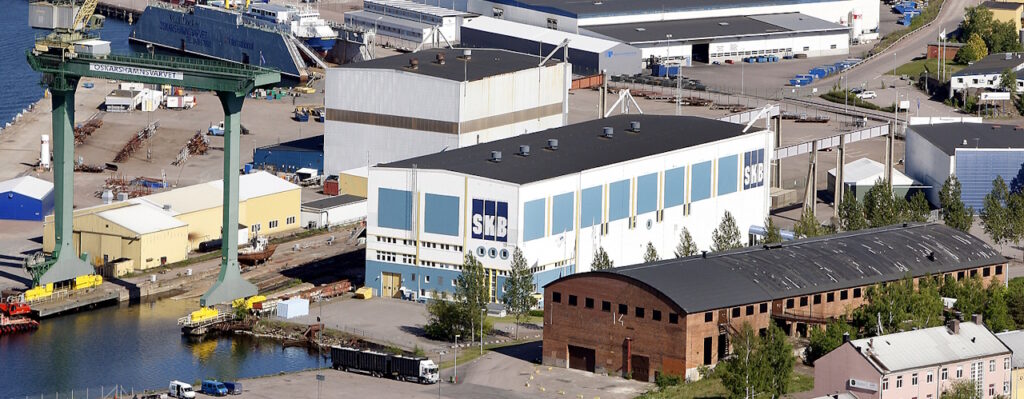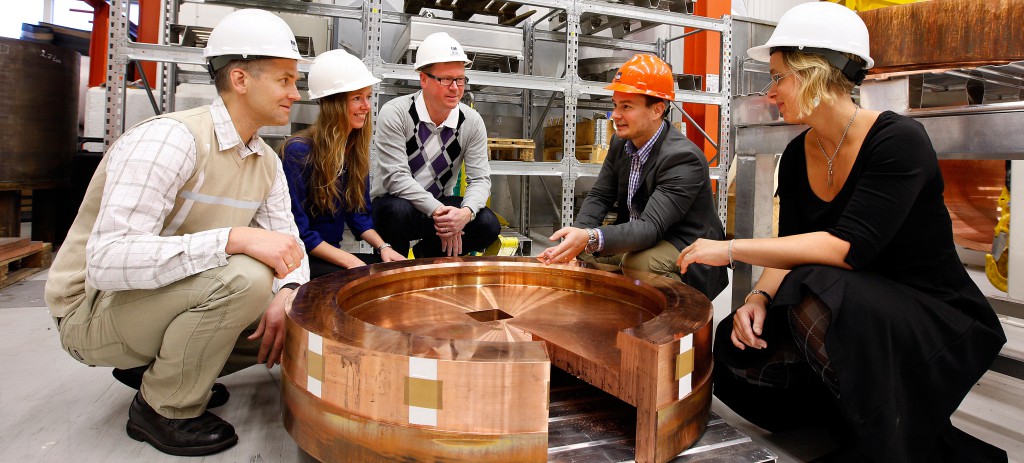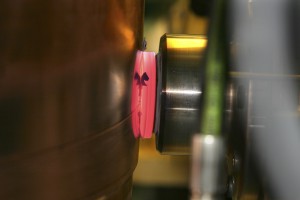The Canister Laboratory
The Canister Laboratory
Before the spent nuclear fuel is deposited in the Spent Fuel Repository it will be encapsulated in steel and copper. SKB’s Canister Laboratory, which is situated in Oskarshamn’s port, is the centre for the development of the technology that will be used for the encapsulation.
The canisters are nearly five metres long and just over one metre in diameter. The shell consists of a bottom plate, a tube and a lid and forms a five-centimetre thick copper casing to protect against corrosion. Inside the canister is an insert of steel to provide the structural integrity required.
Tests are carried out at the Canister Laboratory to fine tune the technology for welding the bottom plates and the lids to the canisters. The methods we are going to use to inspect the components of the canister and the welded joints are also developed and demonstrated here.
Friction welding
The welding technique used is called friction welding, or more specifically friction stir welding. This was developed in the early 1990s by Britain’s Welding Institute (TWI) which in partnership with SKB has adapted the method specifically for welding copper.
The principle of friction welding is relatively straightforward. A rotating conical tool is inserted in the joint between the components that have to be welded. The material around the tool is heated by the friction to about 850 degrees C and softens. The tool is then shifted forwards in the direction of the joint. The metal in its wake is pressed inwards to form a homogenous welded joint.
To make sure that the welds and the rest of the canister’s components meet our high quality standards, they are inspected using several non-destructive techniques that have also been developed and tested at the Canister Laboratory. Ultra sound is the principal method for non-destructive testing of welding. This is supplemented by x-ray and inductive testing, ET or Eddy Current Testing.
The Canister Laboratory is also where the staff who will be working with the canisters in the encapsulation plan will be trained.

Aerial photograph of the Canister Laboratory at the port of Oskarshamn.
International collaboration
SKB collaborates closely with our Finnish counterpart, Posiva, when it comes to manufacturing canisters and sealing techniques. Sweden and Finland have more or less the same conditions for final disposal of spent nuclear fuel and in both countries the same method will be used.
The most important mutual questions are testing the different manufacturing methods used by different suppliers and developing techniques for inspecting the components of the canisters and the welds.
Last review: August 18, 2025
Watch the animated film on friction welding
Last review: August 18, 2025

